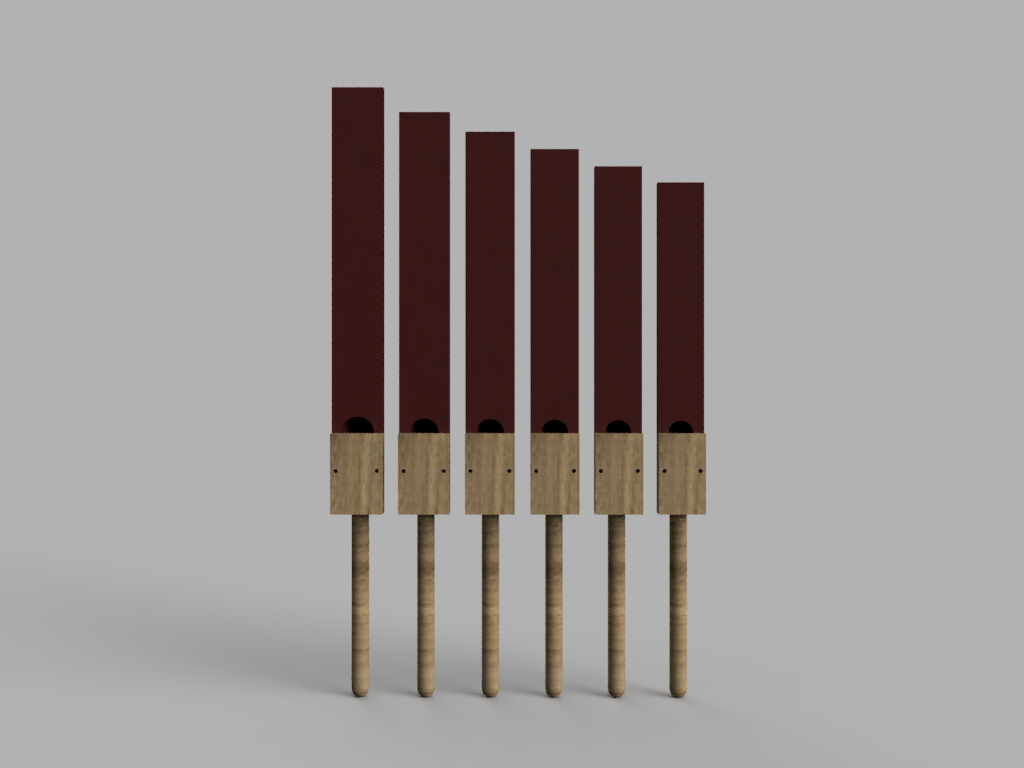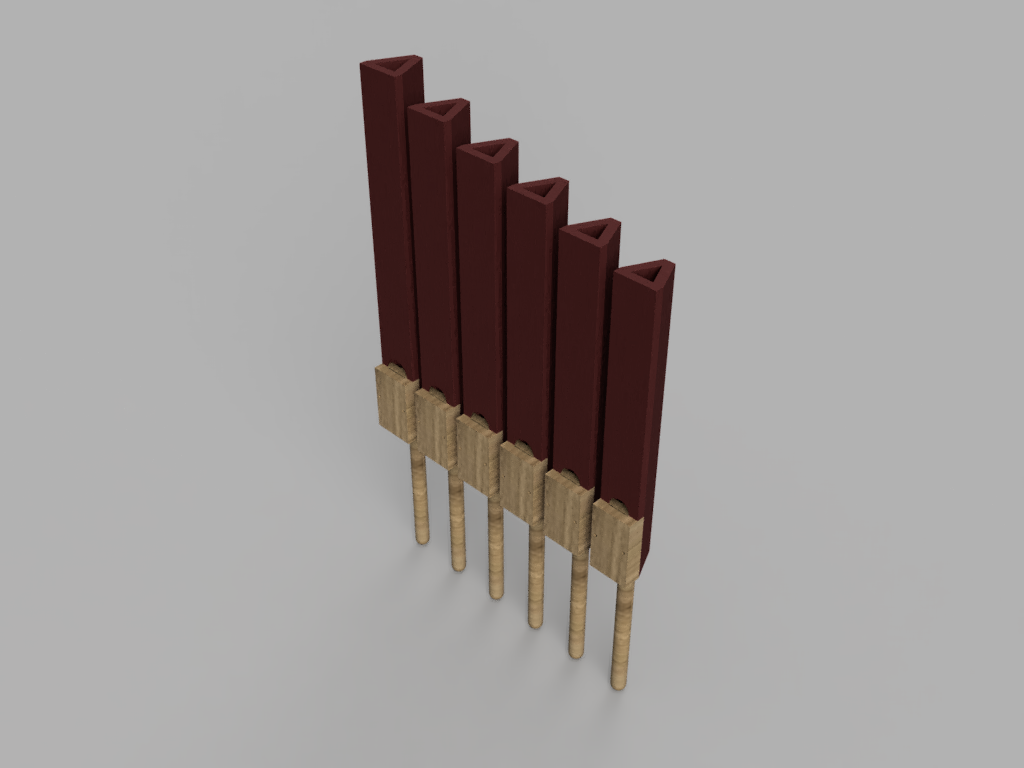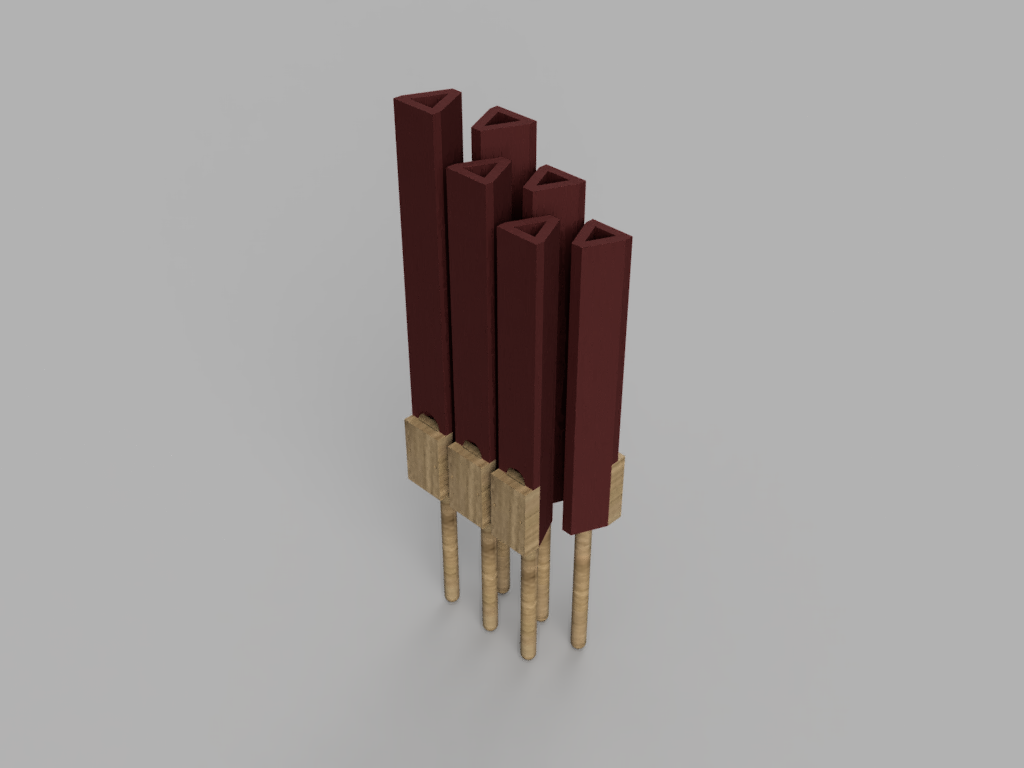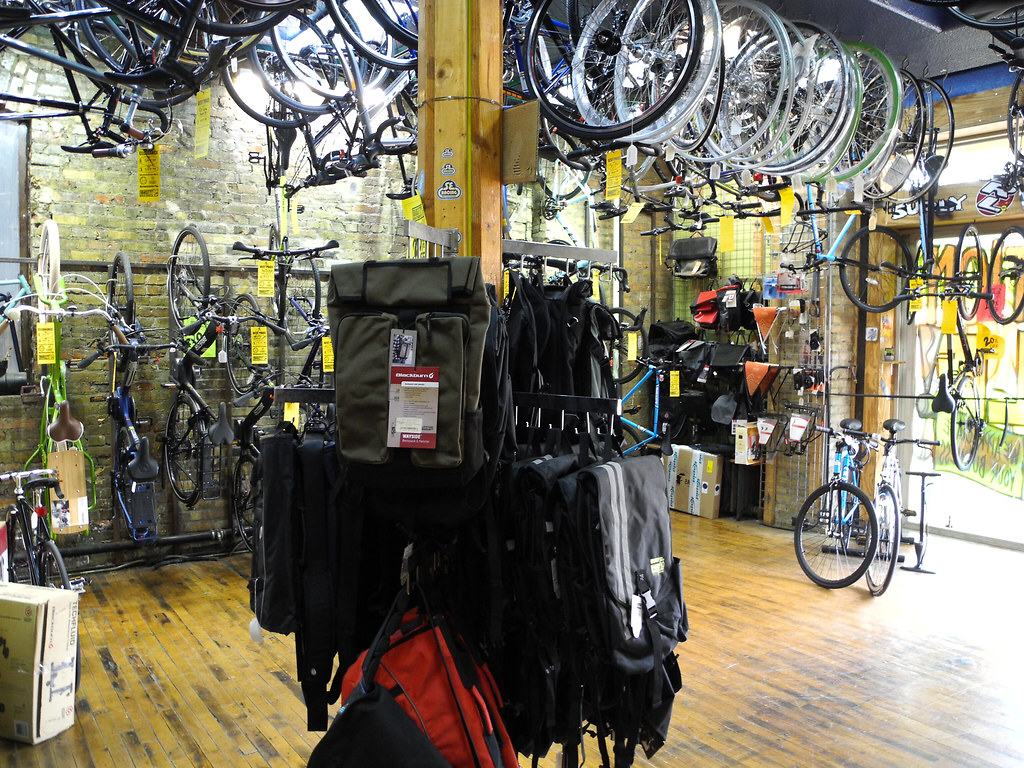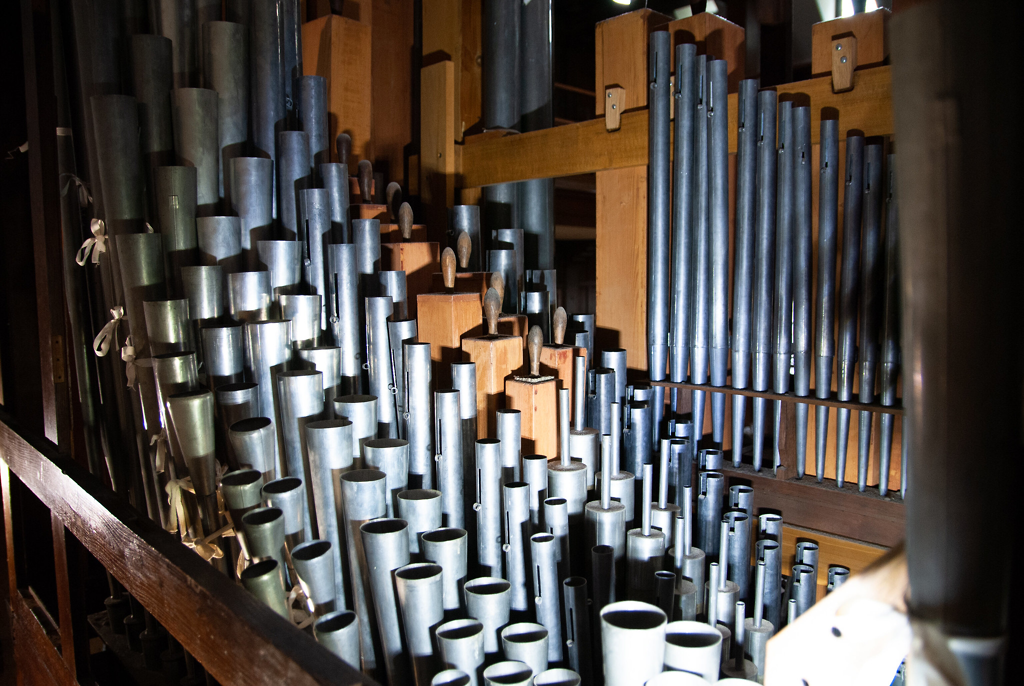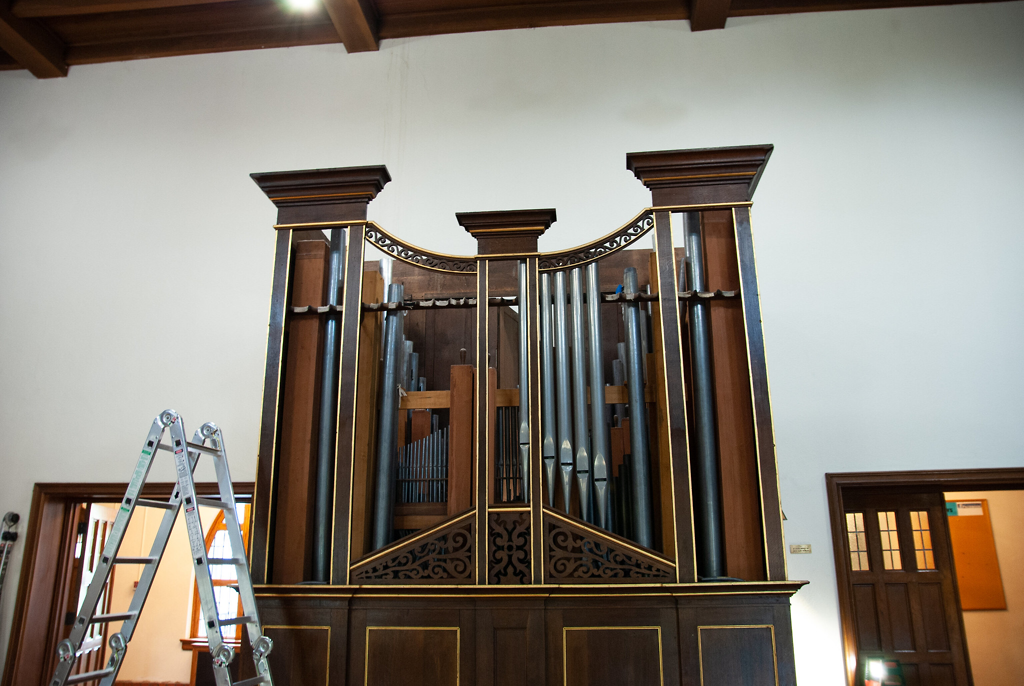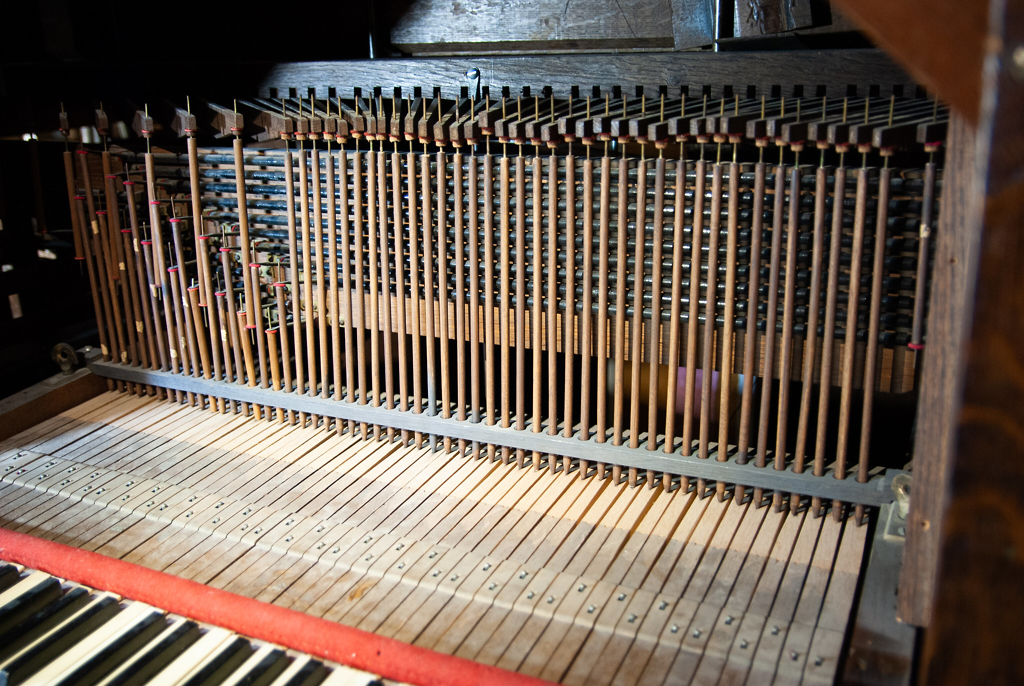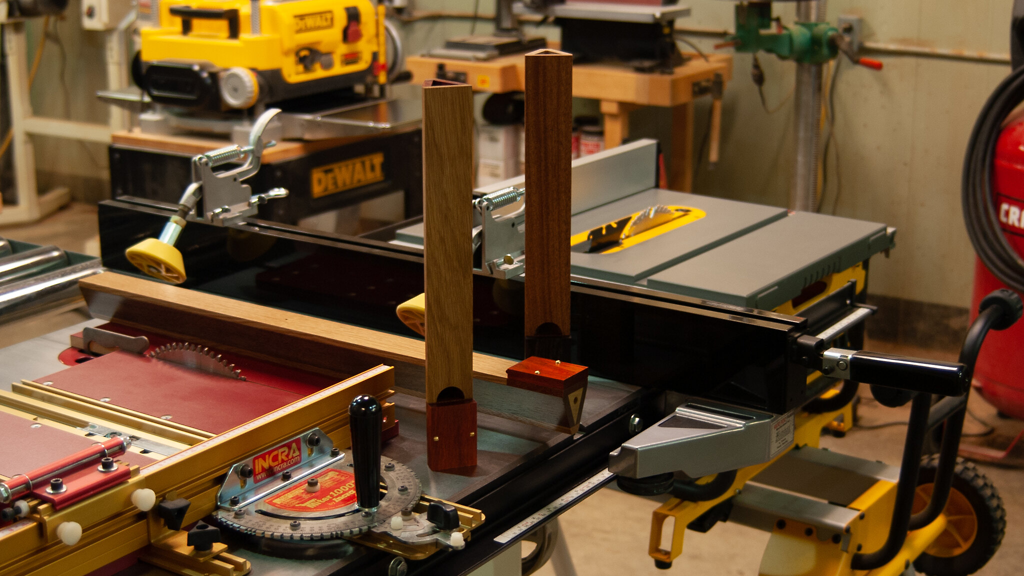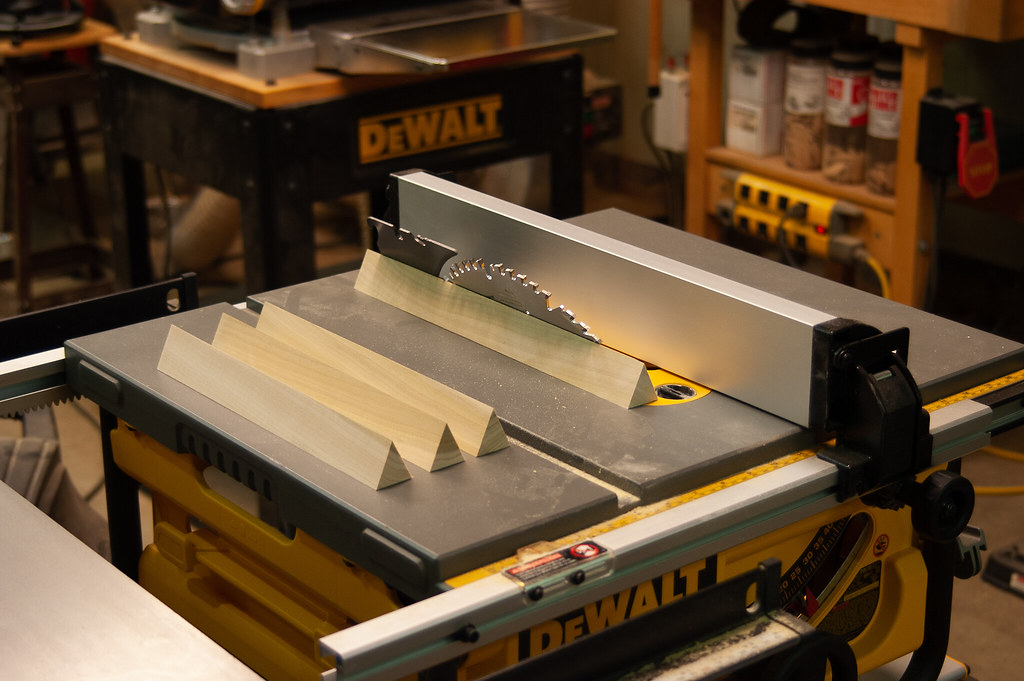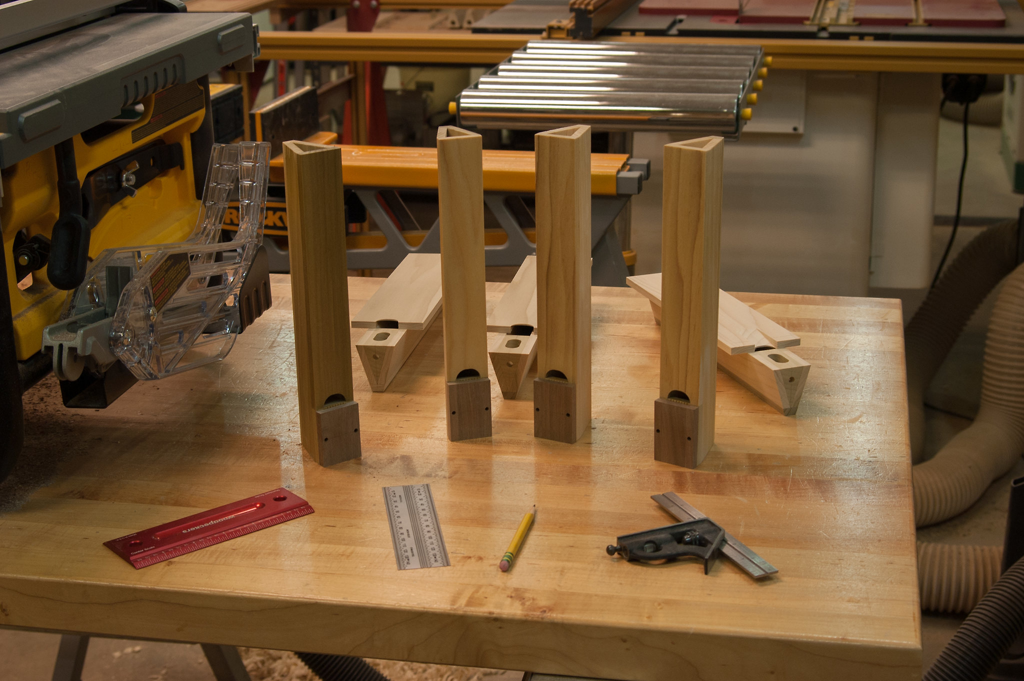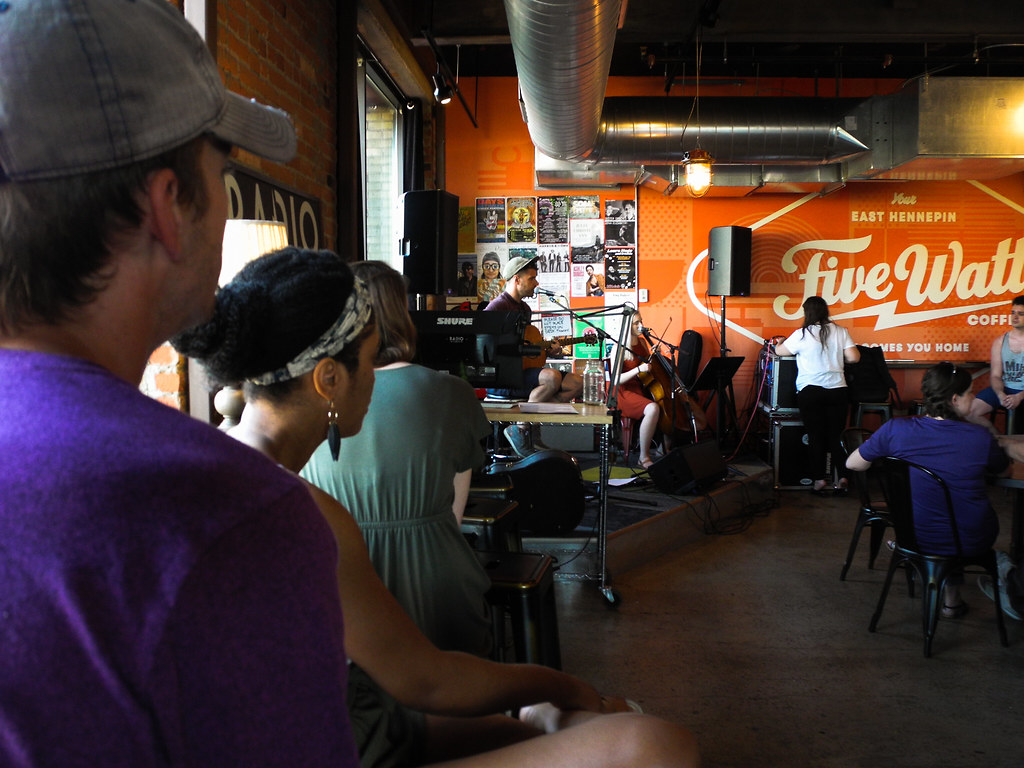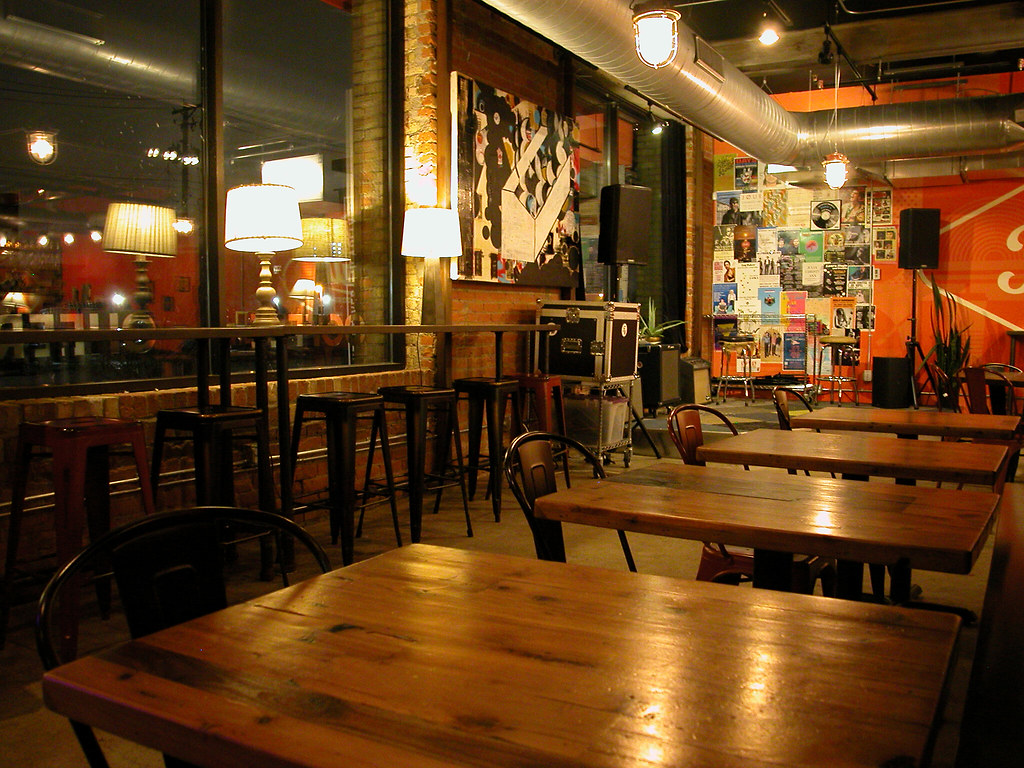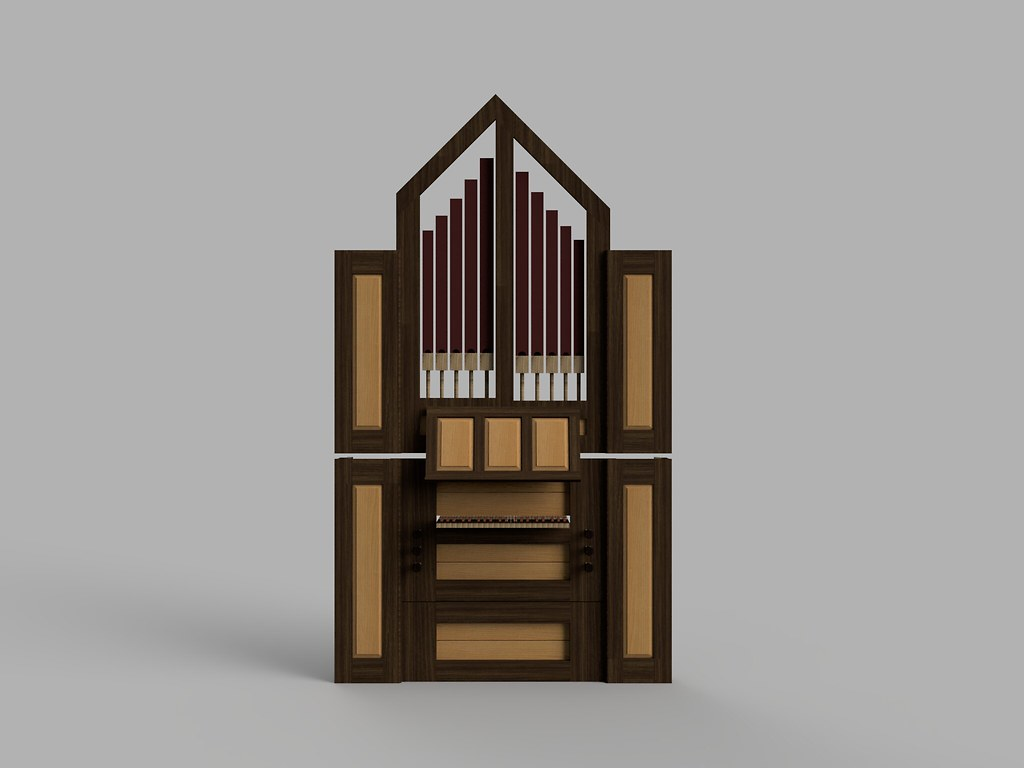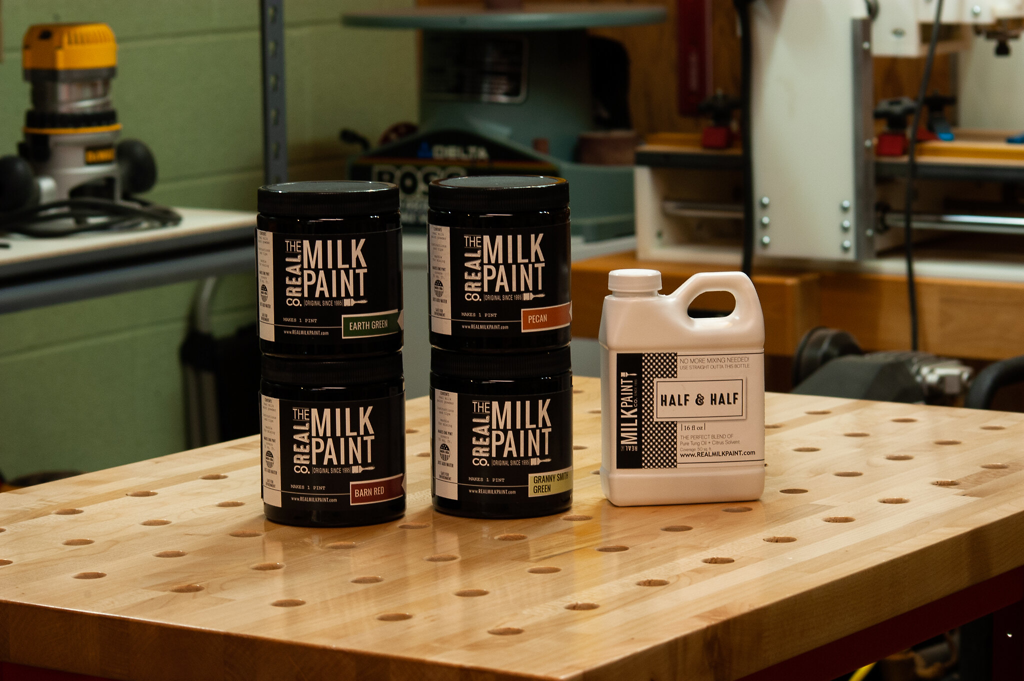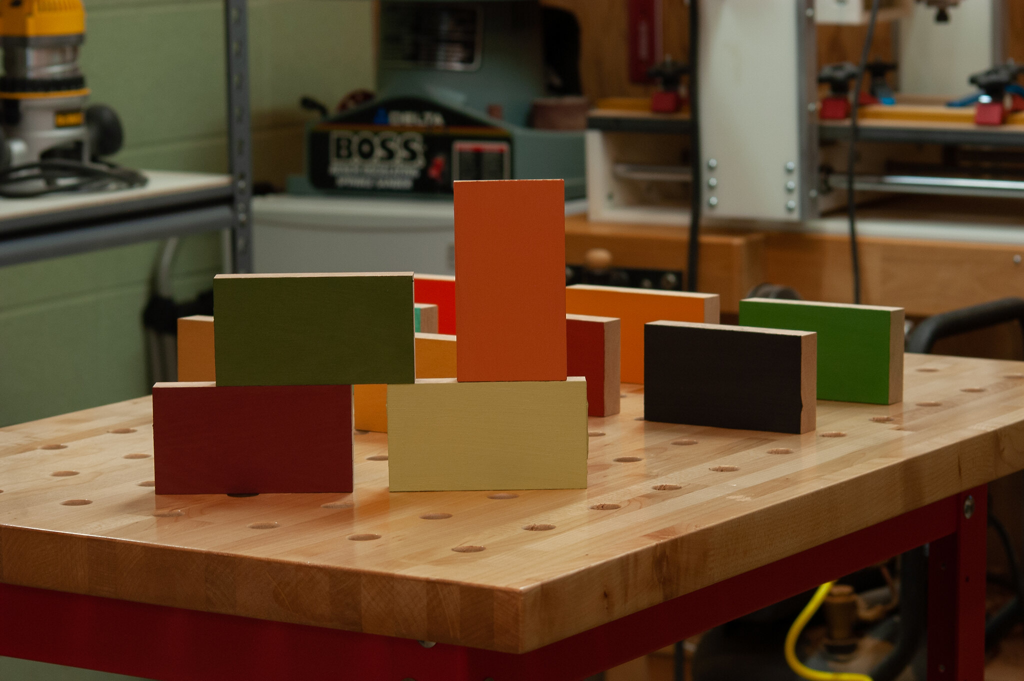![]() August 4, 2025 18:21
August 4, 2025 18:21
I solids modeled the triangular organ pipes shown here in Barn Red, another milk paint color offered by the Real Milk Paint Company. Earlier this year, I saw pipe organ restoration work associated with a mid-nineteenth-century instrument posted on social media when milk paint was making the social media rounds through posts by woodworkers building things like period-correct Windsor chairs.
Some of the internal organ assemblies and larger wood pipes under restoration were painted darker red. I thought about painting the larger pipes I hang off the back of an organ case with red milk paint. There began my passion for milk paint.
I first learned to build tri-pipes about three years ago after seeing a set belonging to the Northrop organ. Building taught me much about them. I would accidentally discover a harmonic variant before considering how an early-twentieth-century pipe shop might have determined scales for an entire set. The practical use of hemispherical mouth geometry was another find, but one that requires later discussion in somewhat greater depth.
The tri-pipe construction seems to have no real tonal benefit. Their main advantage is that they nest efficiently and in doing so free up toeboard space for additional ranks where space is at a premium.
Posted August 4, 2025 18:21
![]() August 27, 2022 11:06
August 27, 2022 11:06
Youngblood Lumber, which suddenly closed after serving the area for generations, was a major source of hardwood lumber to the artisan community in Minneapolis. Another independent business important to me also closed just prior to the pandemic. I was interviewed for an article that appeared in the campus newspaper. You can read it here.
Youngblood Lumber's closing is important to me as an organ builder. It might not be so obvious why closing an independently owned bike shop is equally important unless you read the article linked above. We in the organ community know that the pipe organ has had its own sustainability issue for some time. My experience with the 1802 Tannenberg organ at Hebron Lutheran Church in Madison, Virginia, let me see an approach to sustainable design through the work of a builder living through the constraints of frontier colonial America. I believe the work of Tannenberg is applicable to my work today.
Posted August 27, 2022 11:06
![]() November 28, 2021 11:25
November 28, 2021 11:25
A few years out of college, I traveled to Saint Paul to visit the organs at House of Hope Presbyterian Church on Summit Avenue, especially the large Fisk tracker that occupies the rear balcony. Of course, the 1878 Merklin upfront is well known too. I found myself captivated, though, by the 1852 Ducroquet located in the Assembly Room, a one-manual tracker action Romantic-era French pipe organ, an intimate-sounding transition instrument built with beautiful reeds and well-voiced flues.
Last August, as part of a team, I helped remove the Ducroquet. For me, the process of dismantling became a design study in the emerging French Industrial-Romantic era of pipe organ building.
House of Hope Presbyterian Church acquired the Ducroquet from Jean Louis Loriault, who had removed it from a parish church in Aubusson, France. A history of the organ states that it appeared at the Paris Exposition of 1855. C.B. Fisk, Inc. of Gloucester, Massachusetts, restored the instrument before its installation at House of Hope Church.
Posted November 28, 2021 11:25
![]() April 9, 2021 08:49
April 9, 2021 08:49
I started a project this fall to better understand wood organ pipes made with triangular cross section. I produced a number of triangular shaped pipes last fall after seeing a triangular flute rank up in the pipe chambers at Northrop Auditorium belonging to Aeolian-Skinner Opus 892 located there. Those pipes I made one year ago were my first introduction to building organ pipes with triangular cross section, and I wanted to take on a new project this fall to further investigate the effect of base angle and scale on tonal result.
The triangular cross section may have an actual application if the availability of the first instrument I built becomes a rebuild before relocation. Triangular cross section allows pipes to nest compactly on a windchest. Replacing the rectangular shaped wood Flaut 4' pipes of that organ with those of triangular cross section would free up space on the windchest to address a tonal deficiency by allowing the inclusion of principal scaled stops at 8' and 4' pitch in the treble sharing the first seventeen bass notes with their respective flute counterparts as was sometimes done in the nineteenth century with small instruments. I would only need to retable the windchest, not trivial in and of itself, but still so much material from the original instrument could be used in the rebuild to make cost attractive.
The triangular pipe project I completed this fall has an accidental and potentially significant outcome. I produced a pipe with very narrow scale not really knowing what to expect, and found that it became harmonic effortlessly on lower wind pressure. This needs more investigation because having a harmonic flute available to me that overblows on lower wind pressure would give an additional and useful tone color to include in the design of a small cabinet organ. And its ability to save space makes additional space available to another stop whose inclusion might not otherwise be possible.
I know of no documented example of a harmonic stop whose pipes are made of wood with triangular cross section. Let me therefore introduce you to the Flûte octaviante triangulaire as it might have been named had it come from the shop of Aristide Cavaillé-Coll.
A short video demonstrating the harmonic triangular flute and a normal length pipe speaking the same pitch can be found here.
Posted April 9, 2021 08:49
![]() January 11, 2020 09:25
January 11, 2020 09:25
Milwaukee pipe organ builder John Miller and I got together on New Year's Eve day at Five Watt Coffee on Hennepin here in Minneapolis to discuss all things pipe organ and in particular, that which relates to a project we want to launch that repurposes my Op.1 into something that correlates well with our shared idea of an organ placed in an alternative space for collaborative use. It was notable that Five Watt Coffee is a space that combines a coffee shop with an active alt-indie music performance space. One can even find visual art displayed for sale.
I had thought about the merge of pipe organ culture and alt-hipster culture before and wrote about it here after seeing two friends form a collaborative indie-folk group combining dance with music, perform out one night. I also discussed in the same story the possibility of placing a cabinet organ for collaborative use in an alternative performance space like an art gallery. John Miller saw potential in the type of space provided by Five Watt Coffee itself.
I occasionally work with the Product Design major at the University of Minnesota where students are set up in courses to work collaboratively in teams. This method of instruction is referred to as Team Based Learning or alternatively, Active Learning. The performance space John and I see an organ going into is essentially, whether on a college campus or not, an active learning space where a team of musicians get together and perform using our collaborative pipe organ project as a performance hub. And like Five Watt Coffee, the ideal location would be a multi-use performance space where people come together to experience and interact with the art and performance going on around them.
My goal in the new year is to shop our concepts around and seek a project commission that rebuilds Op.1 into a tool for collaborative music performance. The goal is innovative and worth taking time to pursue.
Posted January 11, 2020 09:25
Reuse and Recycle: The Story of a 43-Note Build
by Steve Panizza
Recent Blog Entries
- A Passion for Milk Paint
- Changing Times and Sustainability
- Ducroquet
- The Flûte octaviante triangulaire: Because Now there Really is Such a Thing
- Alternative Venue Performance Spaces, Active Learning, and Coffee Shop Collaboration
Archive
